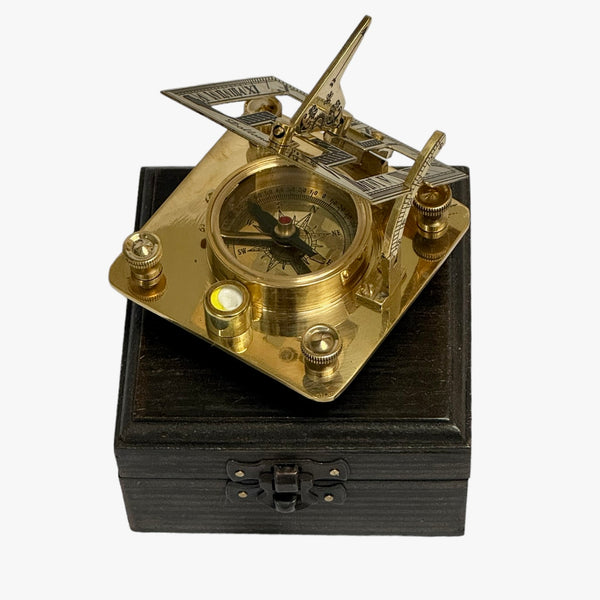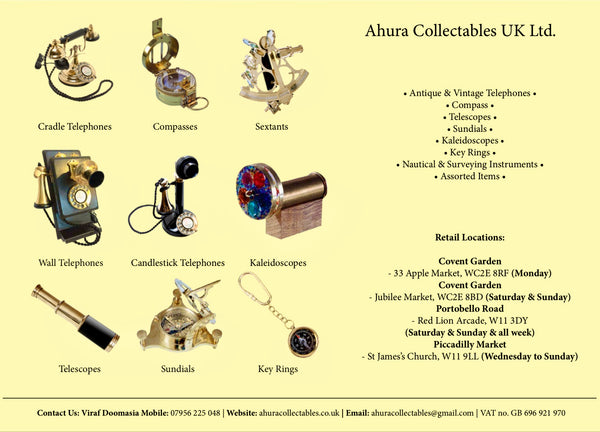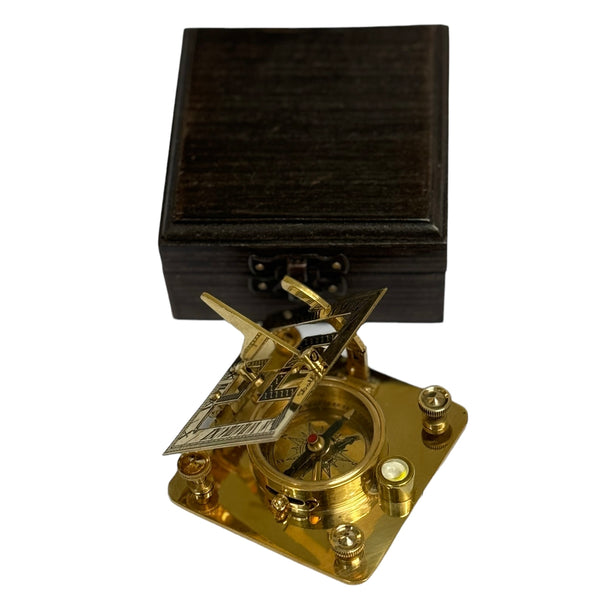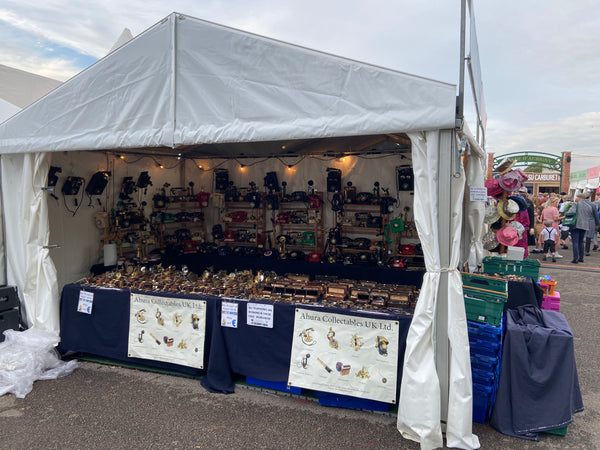Brass 3" Square Folding Sundial Compass in a Wood Box
Regular price
£34
Tax included.
Shipping calculated at checkout.
This square sundial has an in-built compass, and stands on three legs
Dimensions of the base are 7.5 x 7.5 cm.
A sundial is a clock that uses the position of the Sun to indicate the time. Typically a rod casts a shadow upon a plane or surface. On this surface are found markings that indicate the time by the position of the shadow. The sundial was first invented in the 15th century. They were very common throughout the 17th & 18th centuries because all mechanical clocks required a sundial to check that it was keeping correct time. Anyone who possessed a watch was very likely to also own a pocket sundial. Since every town & locality had its own time, people required a sundial or clock to tell the time. By the 1850's this had all changed because the railways needed to keep the same time throughout a journey. So they adopted Greenwich as the standard time. After which the sundial ceases to be of any practical importance and remains merely as a decorative object.
Dimensions of the base are 7.5 x 7.5 cm.
A sundial is a clock that uses the position of the Sun to indicate the time. Typically a rod casts a shadow upon a plane or surface. On this surface are found markings that indicate the time by the position of the shadow. The sundial was first invented in the 15th century. They were very common throughout the 17th & 18th centuries because all mechanical clocks required a sundial to check that it was keeping correct time. Anyone who possessed a watch was very likely to also own a pocket sundial. Since every town & locality had its own time, people required a sundial or clock to tell the time. By the 1850's this had all changed because the railways needed to keep the same time throughout a journey. So they adopted Greenwich as the standard time. After which the sundial ceases to be of any practical importance and remains merely as a decorative object.
























